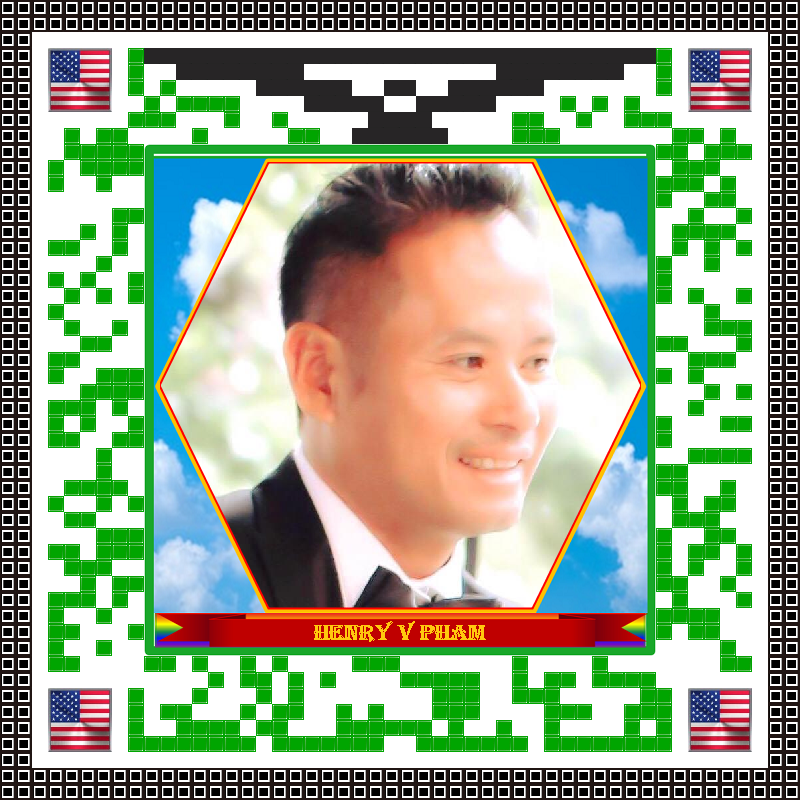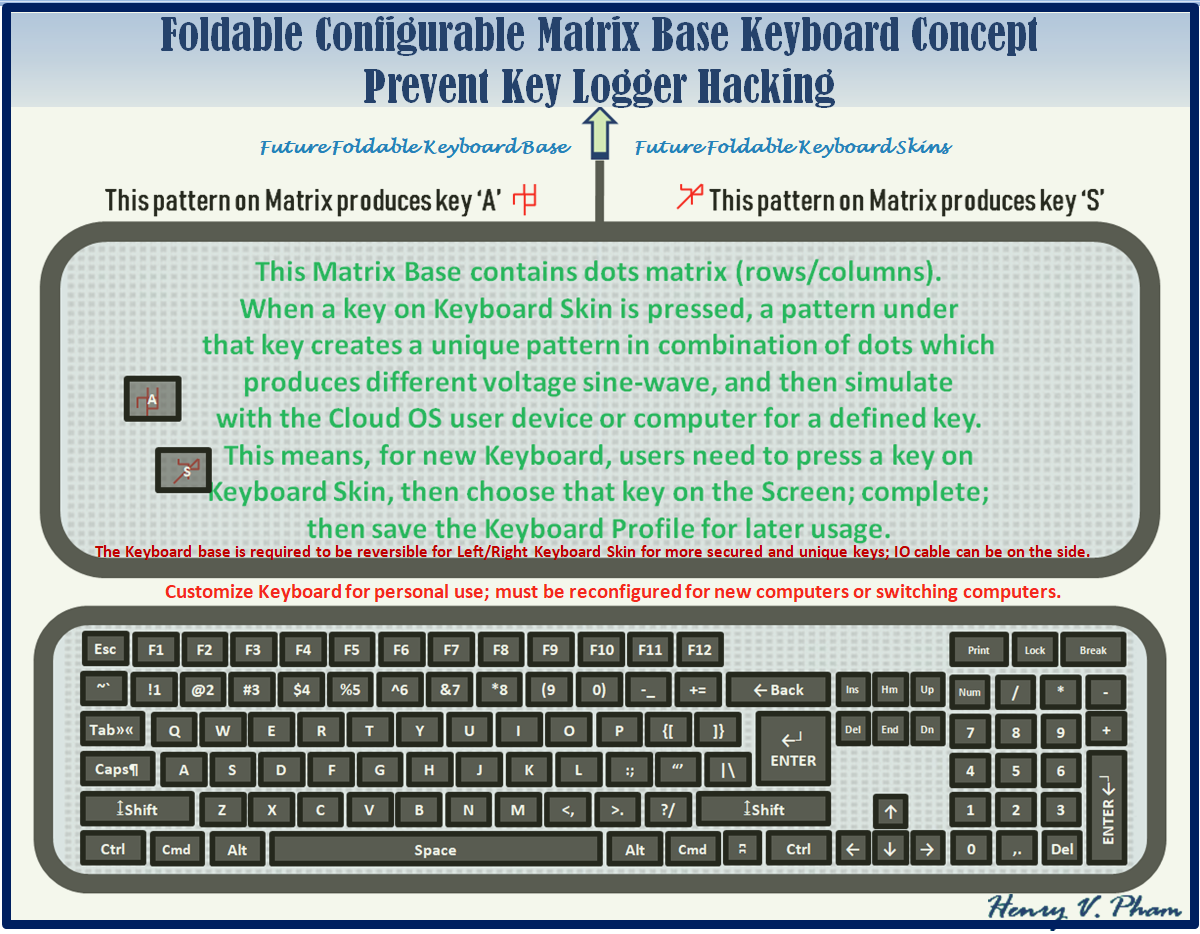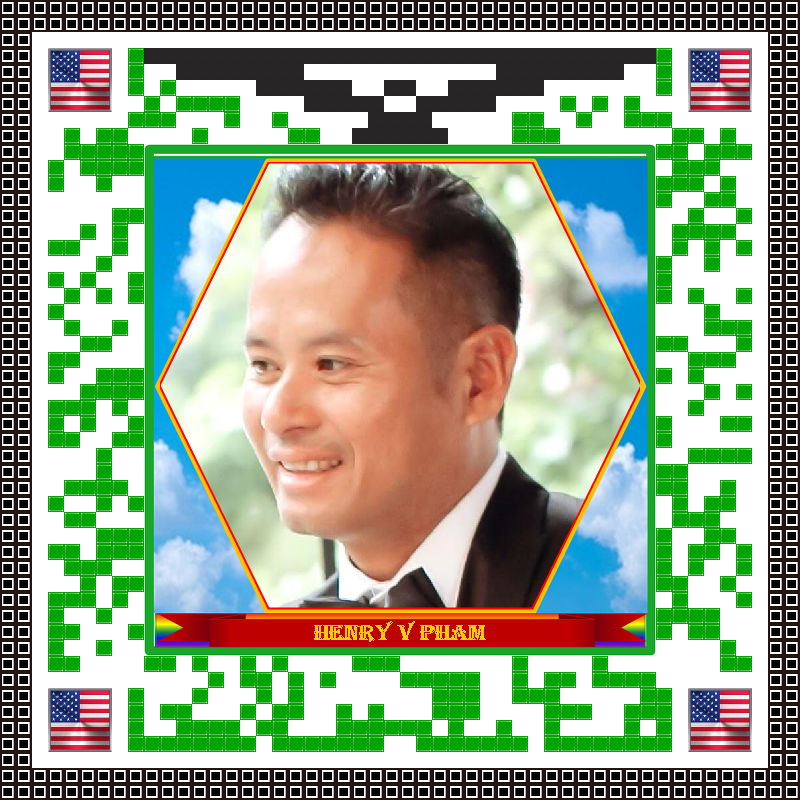
Professional History |
Foldable Configurable Matrix Base Keyboard Concept
The Matrix Base Keyboard will be configurable keys.
The Base Matrix is matrix of electro-sensitivity with rows and columns.
Each key will be configured by users with its own signature pattern when it's pressed.
Keyboard Skin will be different from each manufacture with each key base signature pattern.
This key base will create unique key to provide un-hackable keyboard.
*********************
Cloud OS Handwriting Concept
Alternative to configurable keyboard, Cloud OS can provide handwriting recognition.
Handwriting can be used on an electro-sensitivity Matrix, the users can first collaborate with
the Cloud OS Application Service Container to recognize personal handwriting likes Machine Learning.
The Cloud OS Application Service Container learns handwriting for each person for his or her own account for more uniqueness.
After all the characters, letters, and symbols are collaborated then the users can be able to write on the matrix board
and the Cloud OS Application Service Container will display characters on the screen.
Note that the electro-sensitivity matrix board can be clear by hand for write and rewrite and
also supports some action keys (ENTER, Backspace, Delete, etc...)
*********************
Cloud OS Handwriting Login with Stilus or ëPen Concept
Ideally, prevent hacking when login to Cloud OS can be used Stilus, Pen Mouse or ëPen.
The ëPen can be used to write on any surface, table or table-white board;
then Cloud OS Service Container will recognize handwriting for login.
The idea of having ëPen is for handwriting and drawing,
and this can be used for secured login with handwriting and signature,
and can be used for drawing on an engineering white board or electro-sensitivity matrix board.
IMPORTANT:
Cloud OS will also supports on-screen handwriting and drawing; most importantly, the Cloud OS will supports
Invisible Input Panel for the users to write their sensitive info, password, magic login number, and even with their own hand signature for login.
Invisible Input Panel provides the users with handwriting without seeing to avoid screen capture and forward over wireless microchip.
This way, users do not need to worry about their sensitive info, password, magic login number, and login signature being sent out wirelessly.
http://www.TheCloudOSCenter.com/

|

Linked-in Profile |


